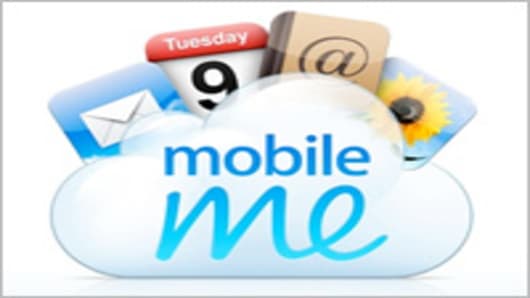It works by storing the master copy of all this information in the cloud. Whenever your machines are online, they connect to the mother ship and update themselves. When you edit an address on your iPhone, you’ll find the same change in Address Book (on your Mac) and Outlook (on your PC). If you send an e-mail reply from your PC at the office, you’ll find it in your Sent Mail folder on the Mac at home.
MobileMe can be very helpful to families with busy calendars; now everybody can refer to the same, always-current datebook. You also escape the “two mailbox problem,” where your cellphone and computer have different e-mail addresses, so you can never remember where you read something. And you’ll never have to call home to ask someone to look up a phone number for you.
All of this should sound familiar to corporate employees; the BlackBerry works much the same way, and so do computers and phones that connect to corporate Exchange servers. Indeed, Apple’s tag line for MobileMe is “Exchange for the rest of us.” (Which is an odd slogan, since the target audience — “the rest of us” — is people who have no idea what Exchange is.)
So how is MobileMe? Well, let’s get the ugliness out of the way first: Its debut last week was a disaster that persisted for days. Existing .Mac members were supposed to be upgraded automatically, but many wound up having no e-mail at all for a day or two. There were bugs, glitches and error messages for days, making it one of the most ham-handed launches in Apple history.
Maybe it wasn’t such a hot idea to introduce MobileMe and the iPhone 3G simultaneously. (Apple has since apologized to its customers and extended their subscriptions by 30 days.)
All right, then: how is MobileMe now?
Allow a couple of hours to set it up. There’s a lot of stuff to download and prepare, and Apple’s instructions aren’t always complete.
You also have to set up your e-mail program to recognize your new MobileMe e-mail address, which ends with the conveniently short “me.com.” Mine, for example, is pogue@me.com; one perk of this fledgling service is that all the good addresses aren’t yet taken, as they are on Yahoo and Gmail.
(Apple won’t say how much it paid to get the juicy domain name me.com. “Let’s just say it wasn’t sitting for $9.95 in the domain registry,” cracked a product manager.)
Once everything’s ready, the magic is impressive. Make a change on your Mac, watch it appear on your iPhone and your PC. Add a new friend to the address book in Outlook Express on your Windows XP machine, and watch it appear in Windows Contacts on your Vista PC. Change an appointment in iCal on the kitchen Mac, and know that it will wirelessly sprout onto your traveling spouse’s iPhone four states away. And your Web bookmarks are the same everywhere.
If a change is made on two machines simultaneously, you’re presented with the conflict — you see both versions — and with one click, you choose which one “wins.”
On Macs, MobileMe can keep even more stuff synched, including your passwords and preference settings.
Actually, there’s a fourth place where you can work with your data: on the Web. At Me.com, Apple has built attractive, ad-free, online versions of your address book, calendar, e-mail program and photo-organizing programs. Unlike most Web programs, these have the fluidity and shortcuts of desktop software. For example, you can drag and drop messages into e-mail folders, flip through photos with the mouse, drag vertically to create appointments on your calendar’s timeline, hit the Enter key instead of clicking O.K. in a dialog box, and so on.
The beauty of the Web is, of course, that you can get to it from almost any computer. Beware, though: you need the latest version of Firefox or Apple’s Safari Web browser to exploit all the features. (After all those years of being treated like an oppressed minority, it must give Apple some satisfaction to exclude Internet Explorer because it “has known compatibility issues with modern Web standards.”)
There’s actually a lot more to MobileMe than sync, since it also retains most of the features of the old .Mac service.



